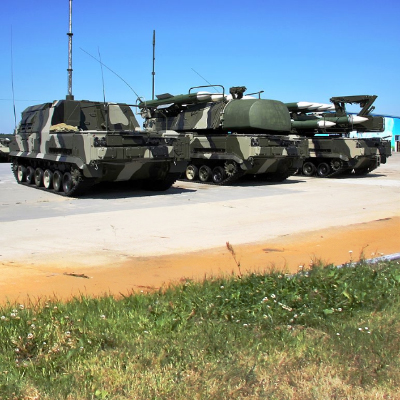Cybersecurity in Defence: Protecting Sensitive Data and Critical Infrastructure

In the swiftly changing digital world, safeguarding confidential information and essential infrastructure in the defence sector is a top priority. With the rapid rise of cyber threats and the growing complexity of malicious players, protecting classified data and crucial operational systems has become a critical concern for defence organizations globally. Whether it's securing private communication channels or strengthening the durability of critical infrastructure, it's crucial to establish strong cybersecurity protocols to guarantee the stability and uninterrupted functioning of defence operations in light of evolving cyber dangers.
The Complexity of Cyber Threats
The digital realm presents an ever-evolving array of cyber threats, each posing unique challenges to the defence sector. Adversarial entities are persistent in their attempts to breach defence systems, aiming to access classified data or disrupt crucial operations. The emergence of sophisticated cyber espionage techniques and disruptive attacks has highlighted the importance of remaining vigilant and adaptable in the face of an evolving threat landscape. As cyber threats continue to advance in complexity and scope, defence organizations must remain proactive and agile, constantly revising their strategies and protocols to effectively counter emerging cyber risks.
Ensuring Strong Defence Networks
The key to establishing a resilient defence system is the deployment of strong cybersecurity measures. These include sophisticated firewalls, intrusion detection systems, and encryption protocols, all working together to create a formidable defence against potential cyber-attacks. Additionally, the incorporation of state-of-the-art technologies like artificial intelligence (AI) and machine learning has significantly improved the ability to rapidly identify and neutralize potential threats, thus enhancing the responsiveness and agility of cybersecurity teams. Regular and thorough security evaluations are carried out to pinpoint any vulnerabilities and minimize potential risks, ensuring that defence networks remain impervious and fortified even against the most sophisticated cyber threats.
Raising Awareness among Users
Despite the deployment of advanced cybersecurity technologies, human error remains a significant vulnerability in the defence sector. To mitigate this risk, comprehensive training programs are implemented, aiming to educate defence personnel on the best practices in cybersecurity. These programs emphasize the critical role of strong and unique passwords, as well as the importance of promptly identifying and reporting potential phishing attempts. By fostering a culture of cybersecurity awareness, defence organizations can empower their personnel to play an active role in maintaining the security and integrity of sensitive data and critical infrastructure.
Keeping Information and Communication Safe
The secure transmission of sensitive data and communications is a cornerstone of effective cybersecurity in the defence sector. Advanced encryption protocols and secure communication channels, such as virtual private networks (VPNs) and encrypted messaging platforms, are extensively employed to ensure the confidentiality and integrity of critical information exchanges within defence networks. Furthermore, the implementation of stringent access controls and multi-factor authentication mechanisms acts as an additional layer of protection, ensuring that only authorized personnel can access and interact with classified information. These comprehensive security measures collectively contribute to the safeguarding of sensitive data and the maintenance of secure communication channels within the defence sector.
Protecting Important Systems
The defence sector heavily relies on critical infrastructure, encompassing a range of essential systems, including command and control networks, power grids, and communication channels. The protection of these vital systems is crucial to maintaining the uninterrupted and secure operation of defence operations. To mitigate the risks posed by potential cyber threats, comprehensive risk assessments are regularly conducted to identify any existing vulnerabilities and weak points within critical infrastructure. Additionally, the implementation of redundancy measures, such as backup systems and failover protocols, ensures the continuity of defence operations, even in the event of a cyber-attack or system failure. Real-time monitoring and threat intelligence sharing enable defence organizations to proactively identify and neutralize potential threats, thereby minimizing the impact of cyber-attacks on critical infrastructure.
Working Together for Safety
Cybersecurity in the defence sector requires a collaborative approach that extends beyond national boundaries. International cooperation and information sharing among allied nations play a pivotal role in countering cross-border cyber threats. Through joint cybersecurity exercises and collaborative knowledge-sharing initiatives, defence organizations can enhance the collective resilience of defence networks, fostering a global defence ecosystem that is adept at thwarting malicious cyber activities. By promoting a culture of cooperation and collaboration, defence organizations can effectively address the evolving challenges posed by cyber threats, ensuring the collective security of nations in an increasingly interconnected digital landscape.
The Future of Cybersecurity in Defence
As technological advancements continue to redefine the digital landscape, the future of cybersecurity in the defence sector is poised to witness a transformative evolution. The integration of emerging technologies, such as quantum encryption, blockchain, and advanced threat detection algorithms, will play a pivotal role in reinforcing the resilience and efficacy of cybersecurity frameworks within defence networks. By incorporating these cutting-edge technologies into existing defence systems, defence organizations can proactively prepare for and address the ever-evolving challenges posed by cyber threats. Furthermore, sustained investments in research and development initiatives will facilitate the creation of innovative cybersecurity solutions, ensuring that defence networks remain adaptive and responsive to emerging cyber threats.
Conclusion
In conclusion, the protection of sensitive data and critical infrastructure remains a central focus in the context of cybersecurity within the defence sector. By prioritizing proactive measures, promoting a culture of cybersecurity awareness, and embracing technological advancements, defence organizations can effectively mitigate the risks posed by evolving cyber threats, thereby ensuring the preservation of national security in an interconnected world. Through continued vigilance and a commitment to enhancing cybersecurity practices, defence organizations can effectively safeguard the integrity of critical defence operations and maintain the sovereignty of nations in the digital age.










